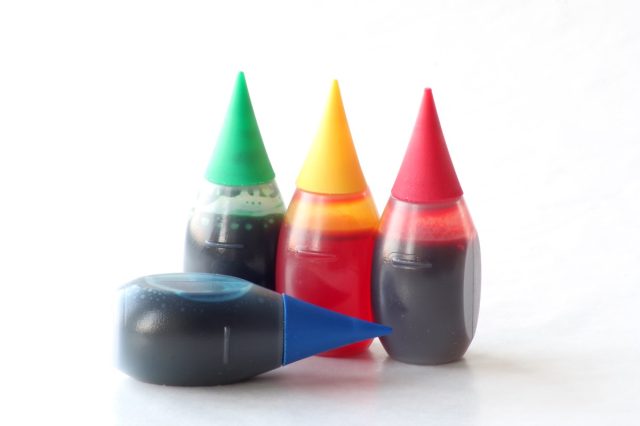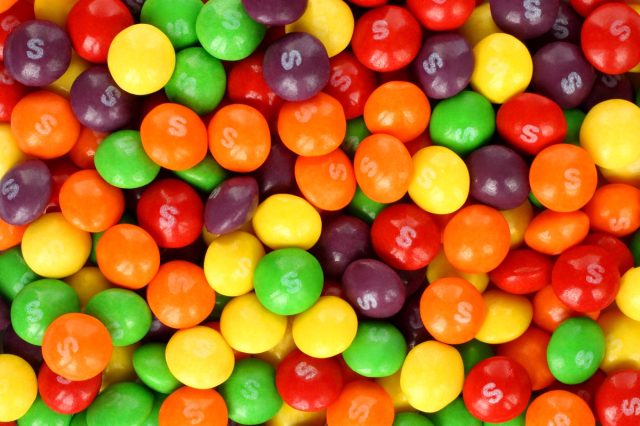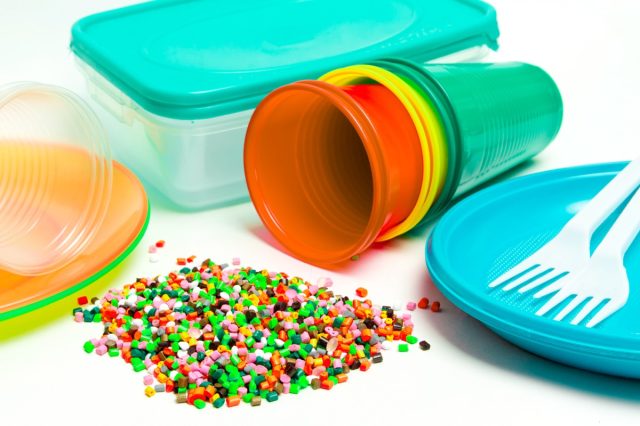A popular food dye found in Skittles, Doritos, and other common foods may lead to bowel diseases, according to a concerning new study published Dec. 20 in the scientific journal, Nature Communications. A team of scientists found that the long-term consumption of a food additive called Red 40, or Allura Red AC, may cause Crohn's disease or ulcerative colitis.
"This study demonstrates significant harmful effects of Allura Red on gut health and identifies gut serotonin as a critical factor mediating these effects," said Waliul Khan, the study's senior author, a professor of the Department of Pathology and Molecular Medicine and a principal investigator of Farncombe Family Digestive Health Research Institute, in a statement. "These findings have important implications in the prevention and management of gut inflammation."
Khan called his team's findings both "striking and alarming," and urged the public to take this news seriously. "This research is a significant advance in alerting the public on the potential harms of food dyes that we consume daily," he said.
What did this new study find?

The team studied a group of mice, feeding them "a dose" of Red 40 "found in commonly consumed dietary products" for 12 weeks and discovered that it "exacerbates experimental models of colitis."
The researchers also found that "exposure to AR during early life primes mice to heightened susceptibility to colitis," due to markers of the artificial color being found in the neuroendocrine intestinal cells.
Neuroendocrine cells are a type of cell in the lining of the intestinal tract that are responsible for producing and releasing hormones and other signaling molecules in response to various stimuli, including mechanical and chemical signals from the digestive tract and nervous system.
Neuroendocrine cells play a vital role in the regulation of various bodily functions, including digestion, metabolism, and immune function. If they are disrupted, you could get an inflammatory bowel disease due to inflammation, ulcers, or a disruption of healthy gut bacteria.
This explains the possible link between eating red 40 food dye and developing a bowel disease.
What is Red 40?

Red 40 is a synthetic food coloring that is commonly used in a variety of food and beverage products to give them a reddish color. It's approved for use as a food coloring in the U.S. by the Food and Drug Administration (FDA).
The additive is derived from petroleum and is produced through a chemical process that involves the reaction of petroleum-derived intermediates with various chemicals. It's often used in conjunction with other food colorings to create a range of different shades and hues.
Which foods contain Red 40?

Red 40 is used in a wide variety of products, including candies, baked goods, cereals, and soft drinks. Some examples of brands that use Red 40 in their products include:
- Skittles
- M&M's
- Starburst
- Jelly Belly
- Twizzlers
- Fanta
- Mountain Dew
- Doritos
It's important to note that not all products from these brands will contain Red 40. Check the ingredient list on food packaging to determine whether a product contains Red 40 or any other potentially controversial ingredients.
Is any amount of Red 40 safe to eat?

As reported, the new study was done on mice, not humans; other studies have suggested that Red 40 may be linked to behavioral problems in children, and it's also been shown to cause allergic reactions in some individuals, particularly those allergic to food dyes.
Despite these concerns, the FDA has determined that Red 40 is safe for consumption when used in the amounts typically found in food products. In 2011, the agency reviewed them for safety—saying of Allura Red: "In the U.S., this color is certifiable as FD&C Red No. 40 and is approved for use in coloring food, drugs, and cosmetics."
The FDA revisited its findings in 2019 and maintained its stance.
However, it's important for you to be aware of the potential risks associated with the use of synthetic food colorings like Red 40, and to consider these risks when making your own daily food choices.
What are other food additives to watch out for?

One danger of food additives is their potential to disrupt the body's natural hormones. Some food additives, such as bisphenol A (BPA) and phthalates, have been shown to disrupt the endocrine system and may be linked to a range of health problems, including fertility issues, obesity, and certain types of cancer.
These additives are found in a variety of products, including plastic containers and packaging materials that can leach into food and beverages. To avoid them, look for products that are "BPA Free."
Another additive that has been linked to health risks is trans fats. These unhealthy fats are often found in processed foods, such as baked goods and fried foods, and have been linked to an increased risk of heart disease, stroke, and other serious health problems.
Trans fats are formed when liquid vegetable oils are partially hydrogenated, a process that gives the oils a longer shelf life and makes them more stable at high temperatures. While trans fats have been largely phased out of the food supply in recent years, they are still present in some products, so it's important to check food labels carefully.
No comments:
Post a Comment